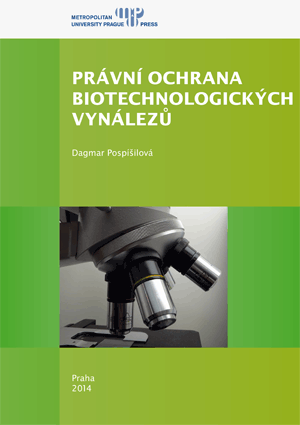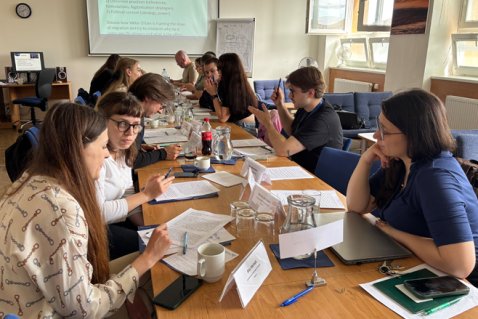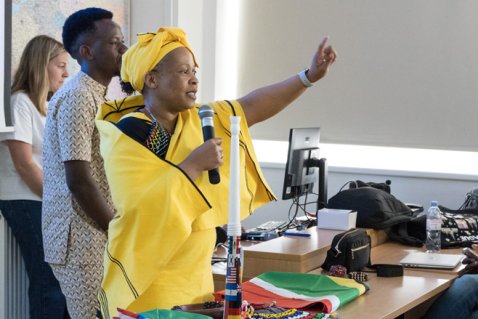POSPÍŠILOVÁ, Dagmar. Právní ochrana biotechnologických vynálezů.

1st ed. Prague: Metropolitan University Prague Press, 2014. 122 s. ISBN 978-80-87956-08-3
Development of biotechnologies coming from instinctive beginnings to our time, when they are one of the most progressive both scientific and industrial areas, is depicted in the exordium of monograph. Extensiveness of the area overarching technologies of food production or waste processing, medicine production and gene-manipulation implicates a strong heterogeneity of approaches to results publishing and their application.
Two hypotheses were stated for the introduced research. The first one stated that legal regulation of protection of biotechnological inventions brings together lots of interpretation problems. The second one supposed that researchers and scientists dealing with biotechnologies do not have information enough about particularities of biotechnological inventions patentability.
The focus of the research leading to the confirmation of the first hypothesis was based on the analyses of both Czech and EU legal regulations, practices of the courts and relevant literature using theoretical-methodological approaches. Even if the monograph does not deal widely with the US patent system, the rise base of starting points of biotechnological patents in the USA was taken in to account too.
The research in the specific legal branch shew that approaches to the solutions of biotechnological inventions legal aspects had not been closed and related with the dynamics and progression of cognition in the area of biotechnological inquiry. It relates especially with stem cells and their relations to human germ or human body in itself.
The first hypothesis was confirmed and opportunities and threats of the both European and Czech patent legal system were identified.
The research leading to verification of the second hypothesis dealing with perception of biotechnological inventions legal protection as a result of a scientific work shew that researchers and scientists having ambition to develop their area of interests miss out (in specific cases) legal protection of their scientific work and tie commercial potential of them and their institutes. For the verification of the hypothesis strengths and weaknesses of attitudes of biotechnological community to patenting of its research results were identified on the base of direct research done with respondents, i.e. biotechnological scientists.
As the main method of the research a method of qualitative research was chosen. The method targets to finding of new matters of facts without relation to their statistical significance. Using the method basis for verification of both hypotheses was found. Complementarily, without representativeness ambition and in a case of one asked question quantitative method was used. The question concerned to preferences of biotechnologists to types of publication outputs (scientific journal, patent, methodology, etc.).
Quantitative evaluation shew, that majority of selected biotechnologists preferred publication in indexed journals (Web of Science) against patenting.
Findings of the research were basis for creation of guidelines for biotechnological invention patenting. The guidelines are a part of the monograph as well. Aim of the guidelines is to adumbrate patenting process of biotechnological inventions to researchers and scientists working in specific areas of biotechnologies to support their thinking about patenting in the time of research project planning. On the other hand the guidelines establishes common platform for communication of biotechnologists and patent attorneys.



